Do you know how to safely tow an ATV? Most states have strict regulations on how, where and when ATVs can be driven on roadways. For that reason, many ATV owners must transport their vehicles to a trail designed for ATVs. When you must tow your all-terrain vehicle, follow these guidelines for the safety and security of all vehicles and passengers involved.
Select a TrailerEnclosed trailers crafted specifically for ATVs are the best bet for owners who want minimal dings and scratches on their cargo. They are also watertight and constructed with a reinforced steel frame. Open trailers offer a wider variety of uses and normally cost less. Either way, ensure that the size and weight of the trailer, including the added weight of any ATVs, falls within the towing capacity of your vehicle.
Use a RampPurchase a loading ramp with a high weight capacity to prevent buckling during loading. Measure the height of the trailer, then be sure to use a long enough ramp to downgrade the incline, especially if you plan on loading the machine without assistance. Some ramps have rungs with slots, designed to skim the wheels free of dirt and mud as the ATV enters the trailer. Ramps made of steel may be the strongest, but aluminum ramps are rust-resistant and weigh less.
Always wear a helmet during loading procedures. With the engine set to the lowest gear and the four-wheel-drive on, slowly drive the ATV up and into the trailer. Immediately engage the parking brake and turn off the engine.
Secure Tie-Down StrapsDo not use a rope to secure the cargo, only tie-down straps rated for heavy loads with hooks designed to attach to the edges of the trailer. Secure the ATV with at least four straps, one for each corner of the machine. Hook one end to the tie-down points on the ATV and the other to the trailer hooks, making the ATV-to-trailer connection as short as possible.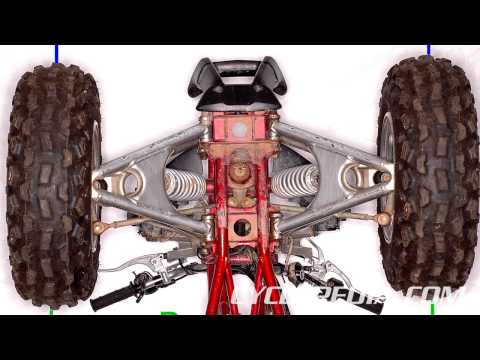 Using the ratchet system, make sure the ATV is bound to the trailer tightly so it doesn’t bump during transport and loosen the ties.
Using the ratchet system, make sure the ATV is bound to the trailer tightly so it doesn’t bump during transport and loosen the ties.
Driving with a trailer attached to your vehicle requires close attention and skilled maneuvering. Stay under the speed limit and leave more space than usual between you and other vehicles for braking. Take wider turns and always use directional signals. Beware of jackknifing, which occurs when the trailer and vehicle become misaligned and end up in an L or V shape. This can cause a life-threatening rollover accident but is prevented by braking before rather than during turns and avoiding sudden stops.
Call Stauffer’s Towing if you need more advice on how to tow an ATV or if you require emergency towing assistance.
Arin Argyle
0 LikesBack to Blog
Keeping your ATV or UTV safe while towing it to the local ride area is something many people do not take enough time to prepare for. Properly securing your trailer is important, as it will not only keep you safe but also free of getting any fines.
Properly securing your trailer is important, as it will not only keep you safe but also free of getting any fines.
Also, setting up your ATV for the purpose of towing is crucial to ensure it is safe and won’t be damaged. So to help you safely tow your ATV and use it for towing, here are all the ATV towing safety tips you need.
When towing an ATV on a trailer, the weight should be evenly distributed from left to right, so each wheel has the same amount of weight on it. Look at the trailer from behind to make sure of this.
An even weight distribution will help the trailer wheels wear evenly and also help the trailer move more predictably on the road. Uneven weight can cause the trailer to turn in one direction.
Also, consider the weight distribution from front to back. Most of the weight should be centred over the front axle, with about 10 to 20% of the trailer’s overall weight resting on the hitch. Otherwise, a trailer with too much weight on the hitch will cause the tow vehicle to rise and reduce its braking and steering abilities.
And if the weight sits too far back on the trailer, the trailer will be unstable when driving at high speeds and can end up fishtailing.
Be sure to follow these safety tips when towing an ATV:
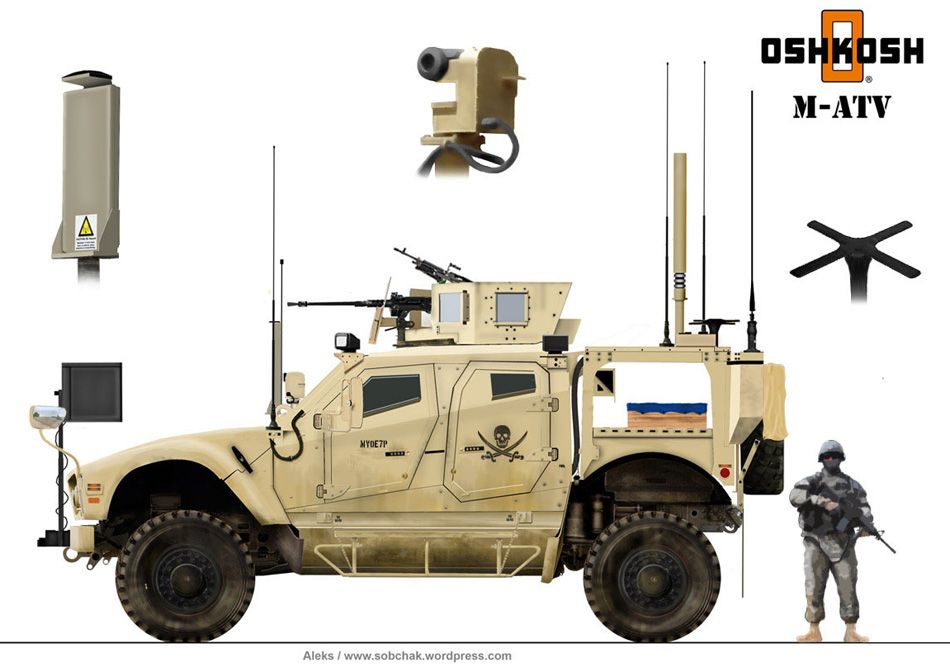 Follow the correct procedures for hooking up your trailer. Double-check the connections, including the coupler and wiring, and be sure that your safety chains are securely connected and crossed under the trailer tongue.
Follow the correct procedures for hooking up your trailer. Double-check the connections, including the coupler and wiring, and be sure that your safety chains are securely connected and crossed under the trailer tongue.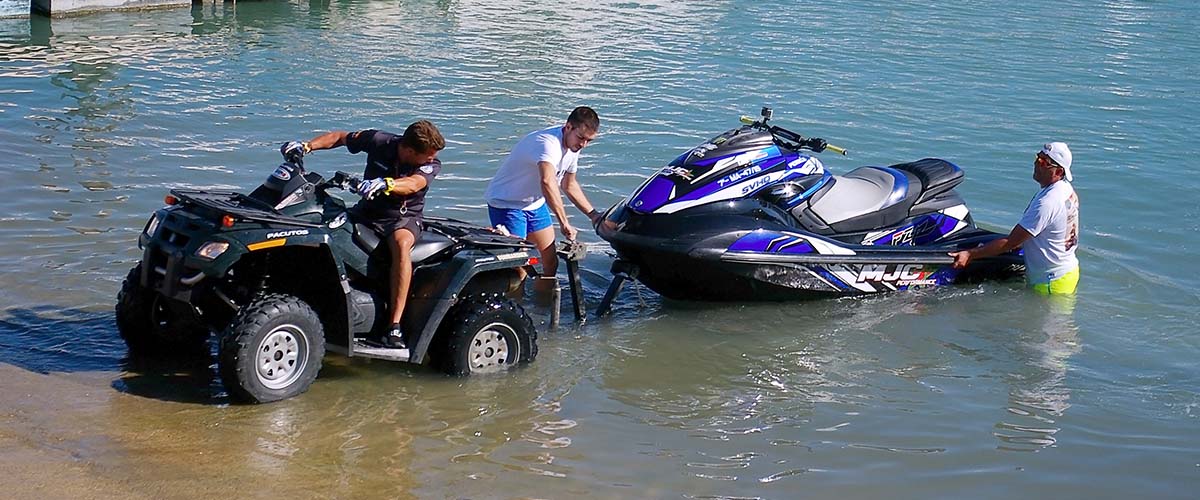 Pressing the button once should align your trailer with your vehicle.
Pressing the button once should align your trailer with your vehicle. 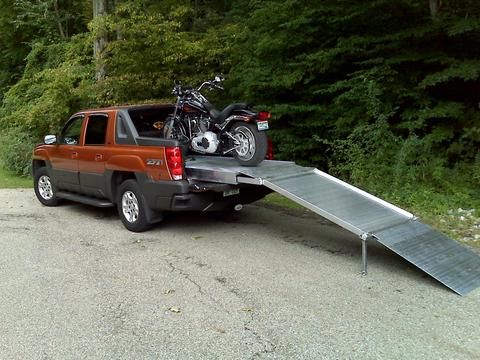 So make sure there is plenty of space to make a complete turnaround.
So make sure there is plenty of space to make a complete turnaround.Consider using these towing accessories for a safe and secure ride:

ATVs and UTVs are effective vehicles for plowing, towing, and hauling heavy loads. They are also useful for farm work, such as turning ground with custom equipment (e.g., an ATV tow behind tiller), getting around large areas faster, and plowing snow in winter.
ATVs and UTVs have many uses and are also more affordable than buying a tractor or a plow truck.
Follow these safety tips for towing with an ATV or UTV:
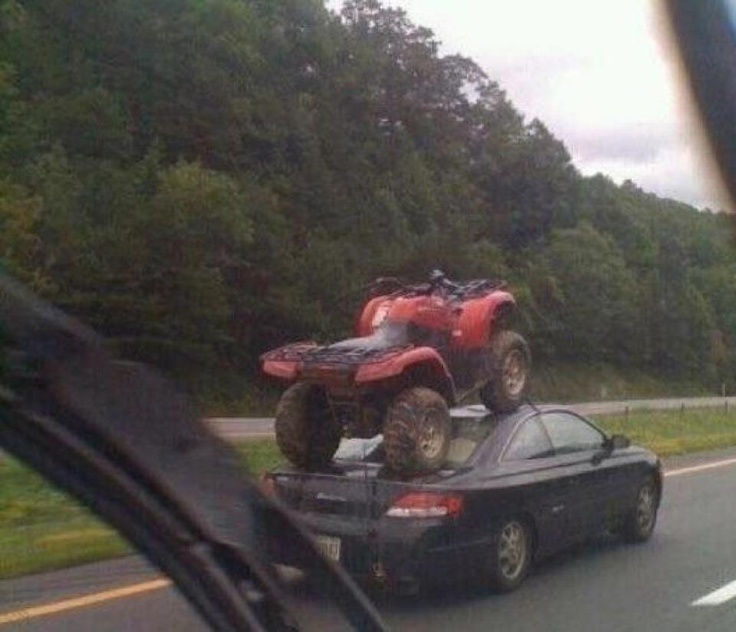
One of the biggest safety concerns when towing an ATV or towing with an ATV is the trailer becoming detached and hitting oncoming traffic. Other concerns include fishtailing and having an uneven weight distribution that will affect steering and the overall control of the vehicle.
To prevent these hazards, be sure to follow all the safety tips mentioned above.
The best ATV for towing is a working ATV. So ensure your ATV or UTV works well and for longer with regular ATV/UTV maintenance. Also make sure you never push your vehicle to the limit when towing.
ATVs and UTVs are both fun to ride and useful for carrying heavy loads. But you need to keep them safe and secure when towing them on the road or using them for towing heavy loads to ensure your safety, the safety of others, and to keep enjoying your ride for many years to come.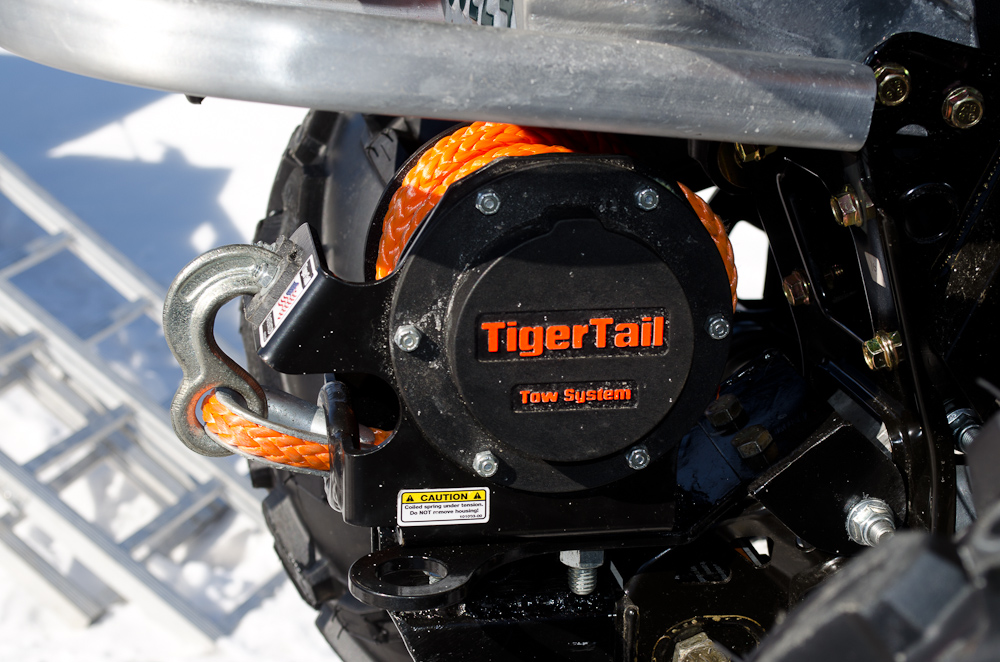
• What you need to take with you without fail – that is, it is not recommended to leave without it.
• What to take with you is desirable - items not essential, but also necessary and important. nine0003 • What else you can take, although not necessary.
What to bring with you when riding an ATV.
• Tow Rope - to tow the ATV in the event of a broken or broken belt, etc., to your home or place of evacuation. Of course, you can use the winch, unwind the cable and attach it to the tractor, but then, when the winch breaks at the most inopportune moment, don't be surprised.
Important! The winch is designed to wind the rope on the drum, and nothing else. nine0005
nine0005
• Tubeless tire repair kit – repair a puncture on the road, drive home or a tire shop.
Important! The content of the kit needs to be updated, over time the flagella dry up and stop working.
• Compressor - Inflate the tire after repair.
Important! Choose a medium capacity compressor, do not take the cheapest one, it is of little use.
• Water - for ingestion or washing, rinsing eyes. nine0003 Important! Take more water, preferably not sweet.
• Sealed packaging for documents, money, phone - so that it all remains intact and functioning. A phone in your pocket usually falls into a puddle when you lean over.
Important! Keep your phone close, not in a case. There are times when life and health depend on the phone, it should always be there.
• A first aid kit - let it never come in handy, but still let it be.
Important! Read the instructions for the contents of the first aid kit at least once, sort out the medicines and dressings, then there may be no time.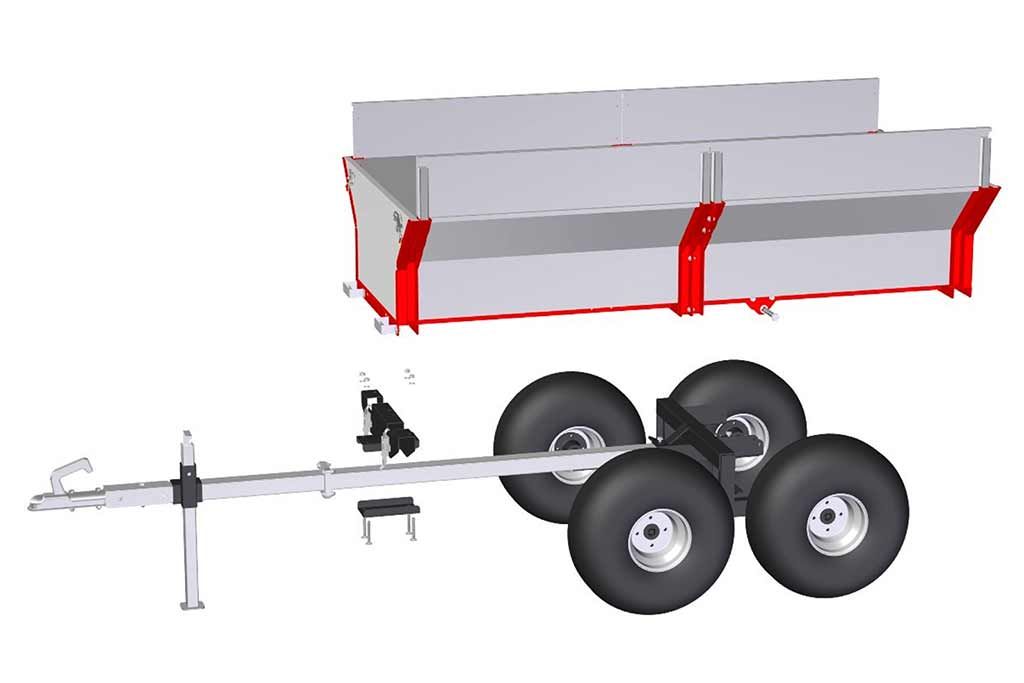 nine0005
nine0005
• Knife – everything is clear here, there should be a knife, period!
Important! Do not hang a knife on your belt, after all, you are not on the hunt, it is the right place in the case.
• Matches - all-weather matches are now sold that burn for several minutes and even in water. A fire is needed not only for barbecue, but also to dry wet clothes.
Important! Put the matches in a dry place, you never know...
What to take with you when riding a quad bike is desirable.
• Change of clothes, fleece, socks, pants. Overcoming various fords and forcing swamps is an obligatory component of rides, it is not always possible to get out of the water dry. Dry clothes will come in handy at least once, and maybe more often. nine0003 Important! Keep clothes dry, otherwise it is useless.
• Hermetic bag - put clothes, matches and other non-essential items in it, but which must remain dry.
Important! Check the inside of your case for sharp corners or protruding screws, etc.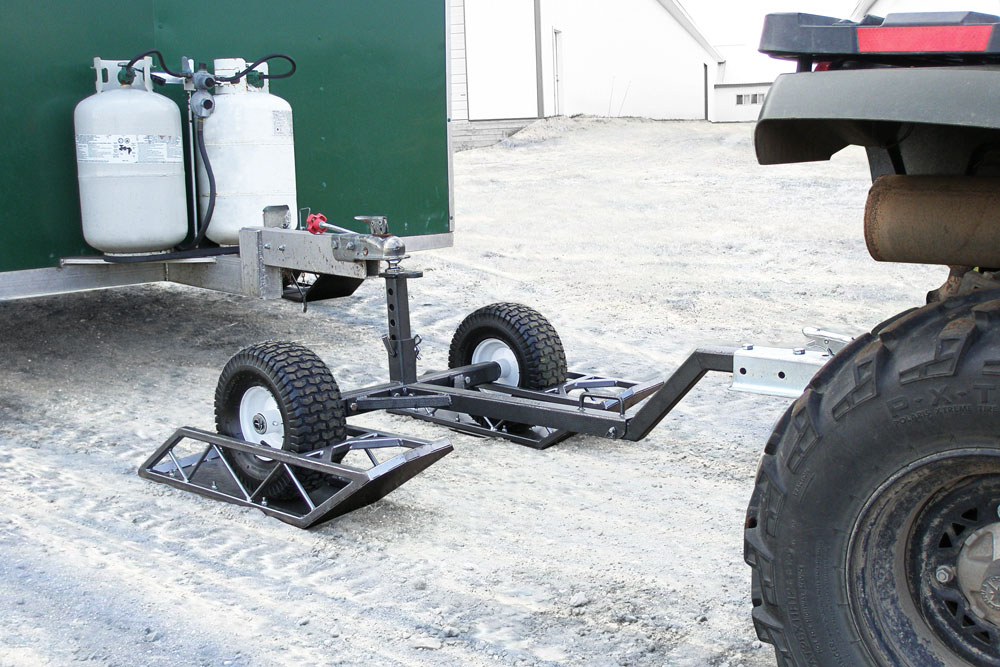 , do not pierce the dry bag in the case.
, do not pierce the dry bag in the case.
• Scotch - I mean strong sticky tape, not what you think. Not a transparent shuttle, but a good reinforced tape. Scotch is our everything! You can also wrap the torn boot of the CV joint with tape and get to the place of repair. nine0003 Important! Only two rolls of tape are better than a roll of tape!
• Plastic clamps are an extremely useful thing, in combination with adhesive tape, you can repair half of the ATV in the field and drive home.
Important! Do not choose the cheapest clamps, they break and do not work.
• Lantern - unfortunately after a sunny day comes a starry night, of course it's beautiful, but the stars shine weakly. You can replace the flashlight with various chemical light sources, some shine like a 40 W light bulb for 4-6 hours. nine0003 Important! Do not choose an expensive flashlight that "beats" for 3 km, choose a flashlight with a wide beam and economical battery consumption.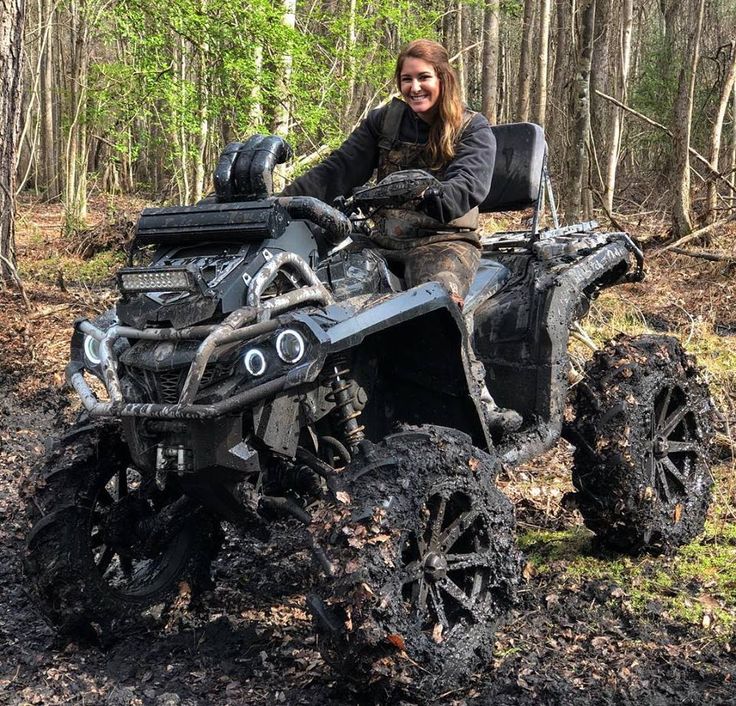
• Thermos - with tea or coffee. Here you can add sugar or other fillers to your taste in tea.
Important! Fasten the thermos in the case very carefully, it must not fly on bumps all over the case. Even a thermos with a metal flask can open or burst.
• A can of petrol – even 5 liters will save the day one day. nine0003 Important! It's better not to put the canister in the trunk, there's also a thermos.
• An energy bar or some kind of Snickers – there is not always a barbecue and time, sometimes a Snickers or a chocolate bar is very useful.
Important! Will definitely melt in the warmth, look for a suitable place.
What to take with you when riding an ATV is not necessary, but if you have somewhere to put it, then why not take it.
• Ax or saw - for fire and other needs.
Important! Close the ax blade, take care of the case.
• Hat - when it's cold and you want to take off your helmet.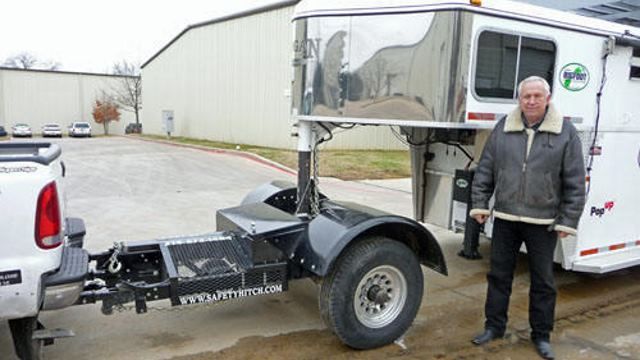
Important! Choose a beautiful hat, it contributes to a good mood
• Bluetooth speaker - listen to music while the kebab is fried, in a beautiful hat.
Important! As a rule, you can charge your phone from the music column, do not forget the wire.
• Waterproof phone case - if you plan to take pictures and look at the map frequently. It is not convenient to take it out of the sealed package all the time. nine0003 Important! Make sure that the case is really sealed, do not confuse it with shockproof.
Of course, this is our view on this issue. We do not claim the truth, just experience. You have the right to supplement this list in accordance with your needs, or shorten it.
Important! ALWAYS take a GOOD MOOD with you! Good luck on the quads.
In the next article we will tell you how to dress properly while riding an ATV, in our opinion. nine0005
| The inventor of this technique is Honda, the first ATV was invented in 1970. There are several reasons for the distribution of this transport. Firstly, to manage this transport, you do not need good physical fitness and the presence of specific skills. In addition, an ATV spends significantly less fuel than a jeep, but allows you to get the same adrenaline rush. And spare parts for it are cheaper, and the ATV itself is not expensive. Today, quad bikes are not just a way to get around on rural roads, but also a hobby that can diversify everyday life. If you decide to join the ranks of extreme sports and think about purchasing an incredibly powerful SUV, then you should approach the choice as responsibly as possible. nine0005 All ATVs can be divided into two types, namely sports and utility , for example, Stels ATVs. The first type is specially designed for racing. Such ATVs have a lightweight design and small wheels, rear-wheel drive. They are capable of reaching a maximum speed of up to 150 kilometers. The suspension of sports models is easily adjustable, and the clearance is reduced and is approximately 150 millimeters. But, there are also racing models that have an increased clearance of up to 280 millimeters. nine0005 Most often, utility ATVs have a cargo trunk, and are also able to withstand from 10 to 100 kilograms of cargo, take the same Stealth UTV 800 Dominator ATV. It should also be noted that the ATV is capable of towing any vehicle weighing up to five hundred kilograms. But when towing, the speed and patency naturally decreases. There is also a sports utility quad bike, which is designed for people who are hiking. But in order to operate such a machine, specialized training may be required. nine0005 There are also ultra-heavy quadra, their main advantage is the presence of a spacious rear trunk that can hold up to four hundred kilograms of cargo. What is important to know when buying an ATV.First of all, before you buy an ATV, you should determine exactly why you are buying it. What will be its purpose? If you plan to carry a large load, then you should buy a model with a large trunk. nine0005 If you need to overcome dirt and off-road, then you need to take a model with high traffic, which is achieved due to the presence of wide tires and low air pressure. Thanks to this feature, the car is able to overcome any impassability. In most cases, the engine on ATVs is single cylinder, but there are also two cylinders (STELS ATV 700 GT RS ATV) American and even Canadian models. Power varies from four to seventy horsepower. The transmission of these vehicles is automatic. Fuel consumption is measured in liters per hour of operation, but much depends on the complexity of the road surface. To reduce power loss, some sports models are equipped with mechanics. Try to buy ATVs in qualified motorcycle dealerships. You can buy ATVs, both domestic and foreign manufacturers. Today, Stels ATVs are very popular. They are assembled in Russia, not in China, where the main factories are located. As a result, the adaptation to our operating conditions is constantly improved. Which children's ATV should a child choose?nine0002 Modern children are drawn to technology from a very early age. Mobile phones, computers, parental cars - all this is of great interest to the youngest child. Shops are now filled with a huge selection of children's cars, motorcycles and ATVs, but how to choose the right vehicle for a child that he will like and provide him with complete safety? Kids ATV is basically a small jeep that is very durable, quite light and develops a lot of power. As a matter of fact, even the youngest driver who has no idea how to drive a car or even a bicycle will be able to figure out how to control a children's ATV and feel like a professional in driving. Children's ATVs are becoming more and more popular every day due to high safety standards and convenient handling. With such a vehicle, you will be sure that the child will not receive serious injuries, but will have a great time outdoors. To choose the right ATV for a child, you must first understand the classification of these "toys", since all ATVs differ in their size, power, safety features, controls and other characteristics. nine0005 Now the most popular are four-stroke children's ATVs, for example, ATV IRBIS ATV110U 110cc 4t, running on gasoline. These ATVs are almost silent, don't use much gasoline, and produce the cleanest exhaust gases. Four-stroke engines also benefit from ease of maintenance. In normal use, you just need to change the oil and lubricate the chain. And, of course, refuel the ATV with gasoline. Another important factor when choosing an ATV for a child is the availability of a guarantee. A child can accidentally unscrew some button, break something, so there should always be an opportunity to carry out warranty repairs. Features of riding a children's ATV. An ATV is no ordinary toy for a child, it is practically a real vehicle, and just like driving a car, there are some dangers that await a child when riding an ATV. The main condition for riding such a “toy” is the understanding of the child that he does not ride a bicycle or a scooter, where you can jump off and stop at any moment. While the child is driving the children's ATV, you must constantly monitor him, and before you put the child behind the wheel, you must be sure that the child understands how to drive this vehicle for children, how to brake and what to do in emergency situations. First you need to think about equipment, buy a helmet for the child, durable gloves, goggles that will protect children's eyes from dust and gas. In addition, it is worth taking care of clothing that will protect the child from falling and from the strong sun. The best option is tight pants and a long-sleeved shirt or sweater. Be sure to explain to the child that wearing a helmet is mandatory - this is the main protection against injuries, which, whatever one may say, can be. Before you let your child steer the ATV, you need to show him how to put the Jeep into park gear and make sure that the ATV is in this state before you start riding. After that, show how to properly climb on the Children's ATV gasoline IRBIS ATV70U 72cc 4t and how to sit. To get on this little jeep, you first need to put one foot on the stand, and throw the other over the seat and put it on the second footboard - so that the child remembers, you can say that you need to sit on an ATV like on a horse. Before you start the engine for the first time, you need to familiarize the child with all the elements with which you can control the machine. Show where the throttle is, where the brake is, where the starter is, where the gears are shifted and where the engine shutdown button is. At first, you need to train in an open area that is not covered with asphalt. It is important that there are no trees, poles and other obstacles nearby. At first, you don’t need to start the engine - just push the ATV with your hands and explain to the child how to turn, at the same time remind you that before you start turning, you must definitely look in the direction in which it will turn, and when turning, the weight of the body must be transferred by slightly leaning in the direction you are turning. |